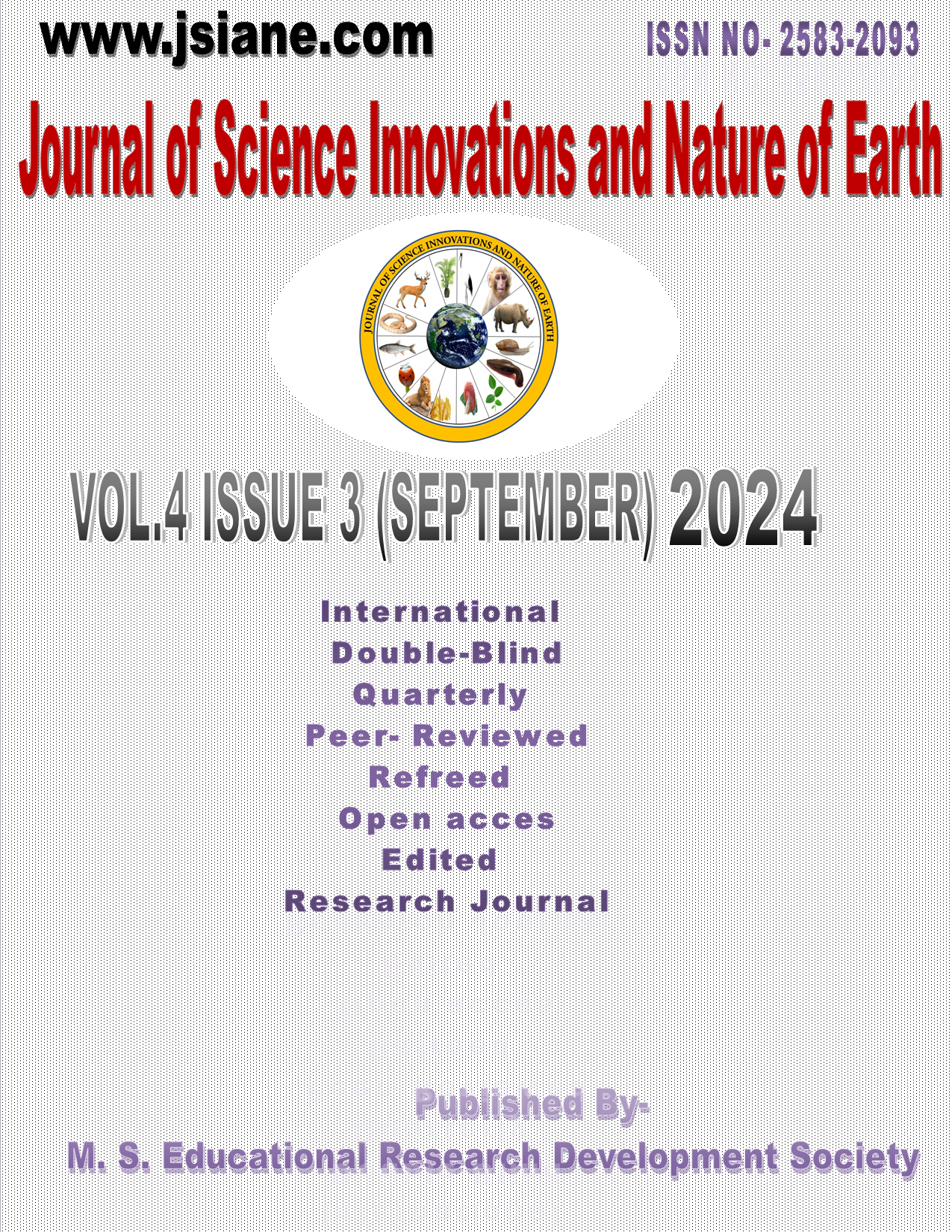Quantitative Degradation Analysis of Amoxicillin Pharmaceutical Products by Selected Bacterial Isolates
DOI:
https://doi.org/10.59436/jsiane.345.2583-2093Keywords:
Amoxicillin, degradation, Maximum Tolerance Level (MTL), Antibiotic bioremediation, Bacterial consortiumAbstract
The current study uses enrichment culture techniques to isolate, screen, and quantitatively evaluate bacterial isolates that can break down the antibiotic amoxicillin. After 13 bacterial strains were isolated from soil samples via selective enrichment, 11 of them showed amoxicillin tolerance up to 500 ppm and were chosen for additional study. Isolates AMX-1b, AMX-2b, AMX-5a, AMX-7a, and AMX-9a showed robust growth at all concentrations, according to Maximum Tolerance Level (MTL) screening, suggesting high resistance and possible antibiotic degradation ability. These results were corroborated by growth pattern analysis, which revealed strong growth patterns for a few isolates even at higher antibiotic doses. A varied collection of rod-shaped bacteria, both Gram-positive and Gram-negative, with differing capacities for motility, endospore and capsule production, enzyme activity, and sugar fermentation were identified through morphological and biochemical characterisation. A bacterial consortium (HI: AMX-5a + AMX-7a) and three isolates (AMX-2b, AMX-5a, and AMX-7a) were chosen for quantitative degradation study. The isolates showed notable amoxicillin degradation under ideal conditions; after 72 hours of incubation, AMX-2b had the best efficiency (77.54%), followed by the HI consortium (73.31%), AMX-5a (59.93%), and AMX-7a (37.80%). These results point to the possible use of particular bacterial isolates and consortia for the bioremediation of settings contaminated with amoxicillin.
References
Binh, V. N., Dang, N., Anh, N. T. K., & Tung, H. H. (2018). Amoxicillin degradation by a bacterial consortium isolated from pharmaceutical wastewater: Efficiency and microbial community analysis. Chemosphere, 211, 1059–1067. https://doi.org/10.1016/j.chemosphere.2018.07.172
Boxall, A. B., Kolpin, D. W., Halling-Sørensen, B., & Tolls, J. (2003). Are veterinary medicines causing environmental risks? Environmental Science & Technology, 37(15), 286A–294A. https://doi.org/10.1021/es032519b
Chen, J., & Xie, S. (2018). Overview of sulfonamide biodegradation and the relevant pathways and microorganisms. Science of the Total Environment, 640–641, 1465–1477. https://doi.org/10.1016/j.scitotenv.2018.06.016
Davies, J., & Davies, D. (2010). Origins and evolution of antibiotic resistance. Microbiology and Molecular Biology Reviews, 74(3), 417–433. https://doi.org/10.1128/MMBR.00016-10
Elmolla, E. S., & Chaudhuri, M. (2010). Degradation of amoxicillin, ampicillin, and cloxacillin antibiotics in aqueous solution by the photo-Fenton process. Journal of Hazardous Materials, 173(1–3), 445–449. https://doi.org/10.1016/j.jhazmat.2009.08.104
Kümmerer, K. (2009). Antibiotics in the aquatic environment—A review—Part I. Chemosphere, 75(4), 417–434. https://doi.org/10.1016/j.chemosphere.2008.11.086
Martinez, J. L. (2009). Environmental pollution by antibiotics and by antibiotic resistance determinants. Environmental Pollution, 157(11), 2893–2902. https://doi.org/10.1016/j.envpol.2009.05.051
Malik, A. and Jaiswal, R. (2000). Metal resistance in Pseudomonas strains isolated from soil treated with industrial wastewater. Journal of Microbiology & Biotechnology. 16, 177-182
Mulla, S. I., Hu, A., Sun, Q., Li, J., Suanon, F., Ashfaq, M., & Yu, C. P. (2018). Biodegradation of amoxicillin by Bacillus subtilis and Pseudomonas aeruginosa in a membrane bioreactor. Journal of Environmental Management, 216, 261–269. https://doi.org/10.1016/j.jenvman.2017.08.003
Tiwari, B., Sellamuthu, B., Ouarda, Y., Drogui, P., Tyagi, R. D., & Buelna, G. (2017). Review on fate and mechanism of removal of pharmaceutical pollutants from wastewater using biological approach. Bioresource Technology, 224, 1–12. https://doi.org/10.1016/j.biortech.2016.11.042
Yan, Y., Xu, X., Shi, C., Yan, W., & Zhang, L. (2019). Enrichment and characterization of bacterial consortia for degrading amoxicillin in a microbial fuel cell. Environmental Science and Pollution Research, 26(22), 22498–22508. https://doi.org/10.1007/s11356-019-05594-3

Downloads
Published
Issue
Section
License
Copyright (c) 2024 Maharaj Singh Educational Research Development Society

This work is licensed under a Creative Commons Attribution-NonCommercial 4.0 International License.









